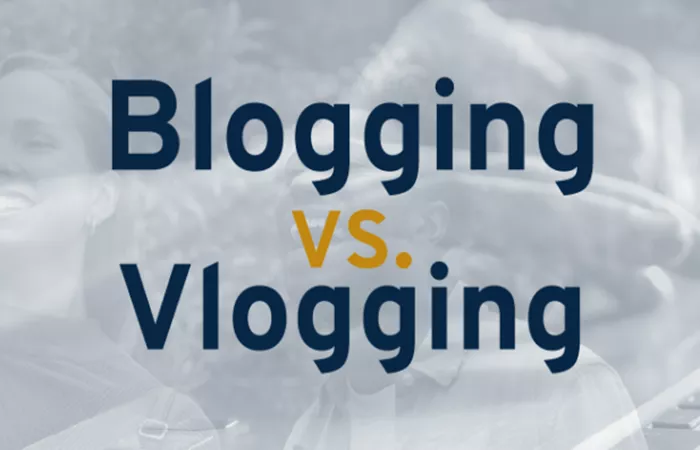In today’s digital age, content creation has become a powerful tool for sharing ideas, building communities, and even earning a living. Two of the most popular forms of content creation are blogging and vlogging. While both involve sharing information and engaging with an audience, they are fundamentally different in terms of format, tools, and audience engagement. This article will explore the key differences between blogging and vlogging, helping you understand which might be the best fit for your creative goals.
What is Blogging?
Blogging is the process of creating written content, often published on a website or platform like WordPress, Medium, or Blogger. A blog typically consists of articles, essays, or posts that focus on a specific topic or niche. Bloggers use text, images, and sometimes embedded videos to convey their message.
Key Features of Blogging
Text-Based Content: Blogs rely heavily on written words. The quality of the content, including grammar, structure, and readability, is crucial.
SEO-Friendly: Blogging is highly search engine optimized. Writers use keywords, meta descriptions, and backlinks to improve visibility on search engines like Google.
Long-Form Content: Blogs often allow for in-depth exploration of topics. Articles can range from 500 to 2,000 words or more.
Low Barrier to Entry: Starting a blog requires minimal equipment—just a computer and an internet connection.
Passive Engagement: Readers can consume blog content at their own pace, making it a flexible option for audiences.
What is Vlogging?
Vlogging, short for “video blogging,” involves creating video content to share ideas, experiences, or tutorials. Vlogs are typically published on platforms like YouTube, TikTok, or Instagram. Unlike blogging, vlogging is more visual and auditory, relying on video production skills.
Key Features of Vlogging
- Video-Based Content: Vlogs are primarily video-driven. They often include footage of the creator speaking, demonstrating, or showcasing something.
- High Engagement: Videos can capture emotions, expressions, and actions, making them more engaging for some audiences.
- Technical Requirements: Vlogging requires cameras, microphones, lighting, and video editing software. This can make it more resource-intensive than blogging.
- Shorter Attention Spans: Vlogs are often shorter than blogs, with most videos ranging from 5 to 20 minutes.
- Platform Dependency: Vlogs thrive on video-centric platforms, which have their own algorithms and audience behaviors.
Key Differences Between Blogging and Vlogging
Content Format
Blogging: Text-based with supporting images or graphics.
Vlogging: Video-based with audio and visual elements.
Skill Set
Blogging: Requires strong writing skills, SEO knowledge, and basic web publishing skills.
Vlogging: Demands video production skills, including filming, editing, and on-camera presence.
Equipment
Blogging: Minimal equipment needed—just a computer and internet access.
Vlogging: Requires cameras, microphones, lighting, and editing software.
Audience Engagement
Blogging: Appeals to readers who prefer consuming information at their own pace.
Vlogging: Attracts viewers who enjoy visual and auditory storytelling.
SEO and Discoverability
Blogging: Highly reliant on search engine optimization (SEO) for discoverability.
Vlogging: Depends on platform algorithms (e.g., YouTube’s recommendation system) and video SEO.
Monetization
Blogging: Monetized through ads, affiliate marketing, sponsored posts, and selling digital products.
Vlogging: Monetized through ad revenue, sponsorships, merchandise, and fan donations.
Time Investment
Blogging: Writing and editing can be time-consuming, but publishing is straightforward.
Vlogging: Filming, editing, and uploading videos can be labor-intensive.
Pros and Cons of Blogging
Pros
- Low Cost: Minimal equipment and tools required.
- SEO Benefits: Blogs can rank well on search engines, driving organic traffic.
- Evergreen Content: Well-written blogs can remain relevant for years.
- Flexibility: Can be done from anywhere with an internet connection.
Cons
- Time-Consuming: Writing and editing can take significant time.
- Lower Engagement: Text may not capture attention as effectively as video.
- Competition: The blogging space is highly saturated.
Pros and Cons of Vlogging
Pros
- High Engagement: Videos can be more interactive and emotionally compelling.
- Visual Appeal: Allows for creative storytelling through visuals and sound.
- Platform Support: Video platforms like YouTube actively promote content.
- Diverse Monetization: Multiple revenue streams, including ads and sponsorships.
Cons
- High Cost: Requires investment in equipment and software.
- Technical Skills: Demands knowledge of filming and editing.
- Time-Intensive: Producing high-quality videos can be laborious.
- Platform Dependency: Reliant on algorithms and platform policies.
- Which Should You Choose: Blogging or Vlogging?
The choice between blogging and vlogging depends on your skills, resources, and goals. Here are some factors to consider:
Choose Blogging If:
- You enjoy writing and have strong language skills.
- You want to create evergreen content that ranks well on search engines.
- You have a limited budget for equipment.
- You prefer a more flexible and independent content creation process.
Choose Vlogging If:
- You are comfortable on camera and enjoy visual storytelling.
- You have the resources to invest in video equipment and editing tools.
- You want to build a highly engaged audience through interactive content.
- You are willing to learn video production and platform algorithms.
Can You Do Both?
Absolutely! Many content creators combine blogging and vlogging to reach a wider audience. For example, you can write a detailed blog post and create a complementary video summarizing the key points. This approach allows you to leverage the strengths of both formats and cater to different audience preferences.
Conclusion
Blogging and vlogging are both powerful ways to share your voice and connect with an audience. While blogging excels in written communication and SEO, vlogging shines in visual storytelling and engagement. By understanding the differences, you can choose the format that aligns with your strengths and goals—or even explore both to maximize your impact.
Whether you’re a wordsmith or a visual storyteller, the key to success lies in consistency, creativity, and a deep understanding of your audience. So, pick your platform, start creating, and let your unique voice be heard!
Relation topics:
- Two More Davao Video Bloggers Face Misinformation Complaints
- How Does a Content Management System Support Blogging?
- How Can You Find the Perfect Catchy Blog Name?

